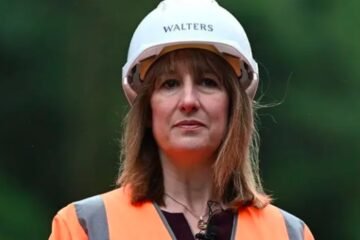The Highlands and north-east councils are plugging into a greener future, with the region set for a transformative EV boost — the biggest of its kind in Scotland.
A £300 million electric vehicle (EV) charging infrastructure contract has been secured by councils across the north of Scotland in what officials are calling a “historic collaboration.” The 20-year deal, led by Highland Council and involving EasyGo, aims to radically expand charging access across some of the UK’s most remote communities.
A First for Scotland — And a Big One
This isn’t just another green infrastructure project. It’s Scotland’s first inter-council EV infrastructure contract and the largest grant award ever made under the Scottish Government’s EV Infrastructure Fund since it launched in 2022.
The numbers are bold:
-
570 new EV charging stations will be installed over the next three years
-
The new network will more than double existing capacity
-
Transport Scotland is backing the project with over £7 million in public funds
The deal was struck between EasyGo and a coalition of councils — Highland, Aberdeen City, Aberdeenshire, and Moray — covering a vast geographic area with both urban centres and scattered rural settlements.

Powering Up the Highlands and Beyond
The size of the area involved brings its own challenges. EV owners in the Highlands often complain about “range anxiety” — the fear of running out of power with no charger in sight.
Cllr Ken Gowans, Vice Convener of the Highland Council, said the new contract was a game-changer for public access to EVs in remote regions. “This project exemplifies the power of collaboration,” he said. “We’re working closely with our neighbours to remove significant barriers to electric vehicle adoption.”
It’s not just about the environment. It’s also about equity.
“For many of our rural residents, the lack of charging points has made EVs impractical,” Gowans said. “We’re fixing that — and doing it together.”
Who’s Paying for What?
So where’s the money coming from? Here’s a quick breakdown:
| Funding Source | Amount Contributed |
|---|---|
| EasyGo (private investment) | £293 million (est.) |
| Scottish Government (public) | £7 million |
| Local Councils (in-kind, planning, land) | Undisclosed |
This isn’t a case of the public footing the entire bill. Most of the financial risk is being taken on by EasyGo, which will also manage the infrastructure over the 20-year lifespan of the contract.
A council insider said, “It’s a rare win-win. We get a modern, usable EV network. The private sector gets long-term access to a growing market.”
What Will the Rollout Look Like?
The installations are scheduled in phases, with the first batch expected before the end of 2025.
And it’s not just about slapping chargers onto lampposts. The councils have committed to a balanced distribution strategy — ensuring both urban centres and rural hamlets benefit.
Some quick notes from the project blueprint:
-
Chargers will range from fast (22kW) to ultra-fast (150kW), depending on location
-
Local contractors will be prioritised for installation and maintenance work
-
Chargers will be open-access, compatible with all major EV brands
-
Future-proofing tech (like battery storage and solar tie-ins) is being explored
One sentence to sum it up? This isn’t just a charging rollout — it’s infrastructure with ambition.
Local Voices Weigh In
For many residents, the change can’t come fast enough.
“I’ve had to plan my week around charging,” says Helen, an EV driver from Elgin. “Sometimes I drive to Aberdeen just to find a free port. It’s maddening.”
In Inverness, taxi driver George says he’s had to turn down airport runs. “Can’t take the risk of running dry in the hills,” he grumbles. “This new rollout might actually let me work the full map again.”
But not everyone’s thrilled.
Some smaller petrol station owners fear the project could undercut their already thin margins. “It’s good for the planet,” says Arjun, who owns a filling station near Huntly, “but we’ve had no consultation. It feels like the shift is happening to us, not with us.”
What This Means for Scotland’s Net Zero Targets
This isn’t just a regional boost — it’s a national benchmark.
The north of Scotland project is now being watched closely by other regions, especially those grappling with similar urban-rural gaps in EV access. It also feeds directly into Scotland’s 2030 target of phasing out new petrol and diesel cars.
A Transport Scotland official noted, “This is exactly the kind of public-private innovation we envisioned when launching the EV Infrastructure Fund.”
He added, “We want more of this — and we’ll be pushing other councils to take note.”


















